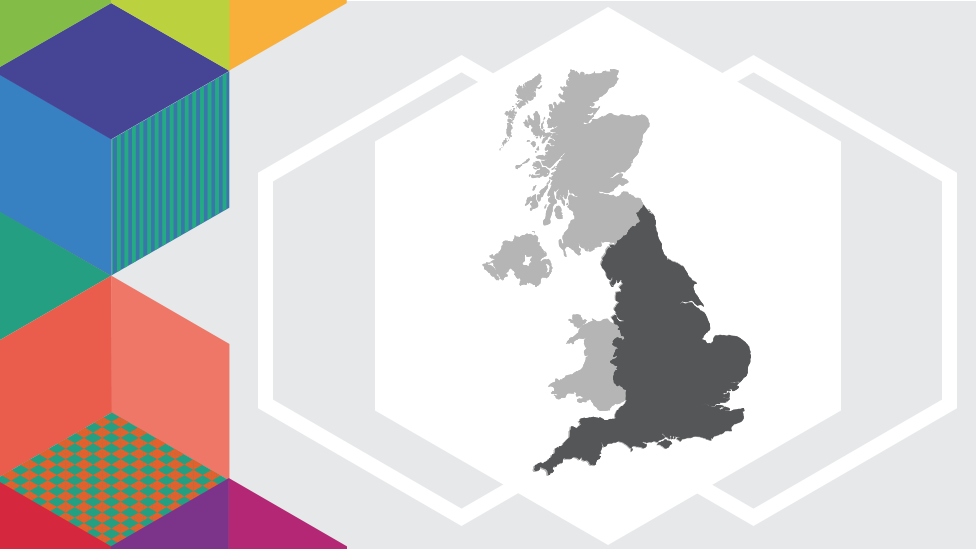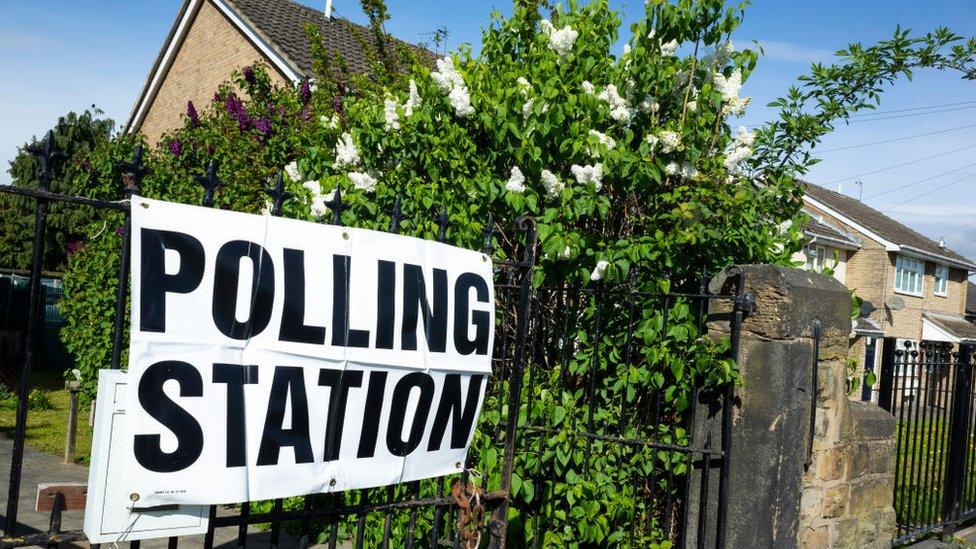Local elections 2023: What to expect from May's polls in England
- Published
- comments

May is a big month for the UK. There's the King's coronation on 6 May. A few days later, the music world will descend on Liverpool for Eurovision. And for political geeks like me there's another big date in the diary; the local elections on 4 May.
Local elections are the biggest test of political opinion in England ahead of the next general election. More than 8,000 seats are up for grabs this time. The elections are about everything from potholes to council tax and how much we should all pay for local services.
But the results will also give us a good idea of the lay of the political land. Are the Conservatives struggling? Is Labour gaining enough support to win the next general election? Are the Liberal Democrats about to eat into Tory heartlands in the south of England?
Before we explore the answers, a bit of context. Local elections in the UK work on four-year cycles. Votes happen most years, but with different parts of the country taking part.
The seats up for grabs this year are roughly the same as those that were up for grabs in May 2019. That was a bad period for the Conservatives, with the party engulfed in a civil war over Brexit. Labour was in a tough place too, with serious splits in the party over Jeremy Corbyn's leadership.
This matters; because the number of seats lost and won this year will be in relation to a result which was pretty bad for the two biggest parties. The Conservatives don't have as far to fall - Labour are starting from a fairly low point and will want to make big gains.


Conservatives
The Conservatives are braced for a bad set of results. Cabinet ministers have all been told to make three campaign visits to target areas. But senior figures in the party say they are likely to lose hundreds of seats - perhaps 1,000.
There will be a bit of expectation management going on here (if you're expecting a REALLY "bad result", a result that's just "bad" doesn't feel like as big a blow). But the Tories are preparing for losses in places like Surrey, Herefordshire, Oxfordshire and beyond.
Insiders working on the campaign accept many voters are unhappy with the party (particularly about the political turmoil last year) and will want to make that clear.
Will that be a verdict on Rishi Sunak? In part, it has to be, because this is his first big electoral test as Conservative leader. But Tories are also arguing behind the scenes that the party is doing better on key issues like the economy, immigration and leadership. The Conservatives are preparing for a blow, but they'll argue it's not a fatal one.
Labour
Labour thinks it has a good chance of forming the next government at Westminster - and it will want to show it has momentum. Labour strategists think the party's councillor tally will have to go up by hundreds to show it is on track.
The big test for Labour, insiders say, will be whether they are making enough progress in areas where they need to pick up seats at a general election. Those they'll be watching closely include Swindon, Derby, Plymouth, Darlington, Thanet and Stoke-on-Trent.
But there is some expectation management going on here too. Labour say they don't expect the result in May to mirror national opinion polls (which suggest the party is on course for power). That's because some key parts of the UK are not voting; London and Wales, where Labour does well, and Scotland, where it hopes to.

Liberal Democrats
The Liberal Democrats are firmly expecting gains too. They are targeting Conservative voters unhappy with the government at Westminster. Campaigners report finding former Tory members so disillusioned they are prepared to deliver leaflets for them.
The Lib Dems are not going for subtlety in this campaign. At their launch, leader Sir Ed Davey drove a tractor through a wall of blue haybales; an in your face message that the party was targeting the "Blue Wall' of Conservative-voting seats.
The Blue Wall is mostly (though not exclusively) in the south of England; traditional Tory seats where the Lib Dems think voters want a change.
They will be looking at May's results to see if they can take some scalps at a future general election; a lot of attention is being paid to Deputy Prime Minister Dominic Raab's constituency in Esher and Walton.
The Lib Dems also have their sights set on gains in areas like Stratford-on- Avon (where Nadhim Zahawi is the local MP) and Wokingham (John Redwood).
Interestingly, senior figures think voters have moved on from Brexit divisions. They believe former leave voters are now prepared to back the remain-supporting Lib Dems.
Green Party
The Greens have been picking up councillors in local elections in recent years - and are confident of keeping that trend going.
Despite the 2019 result being extremely good for the party it thinks it can add another 100 or so seats this year. Green strategists say they are hoping to take seats from both the Conservatives and Labour - and perhaps win their first majority control of a council (Mid Suffolk).
Independents
There are thousands of independent candidates standing too - and they are likely to form a significant part of the electoral map. They are often focused on specific issues in their area.
That is another complicating factor when it comes to comparing local election results to general election projections.
But the vote on 4 May will be closely watched. In communities where there is debate over big local issues. And in Westminster; where ministers and MPs will be wondering what it might all mean for their future.
- Published3 May 2023

- Published9 May 2023

- Published29 April
